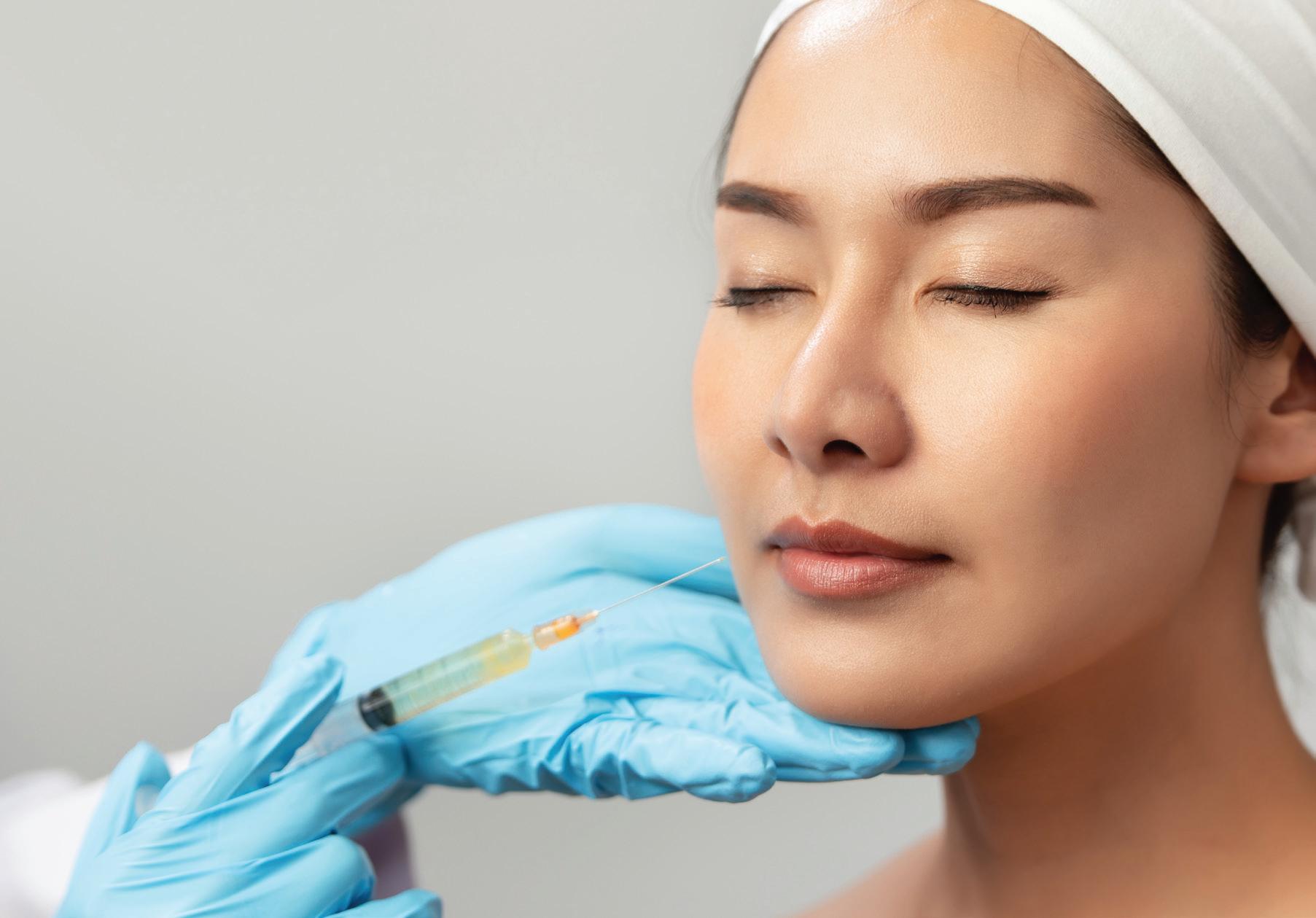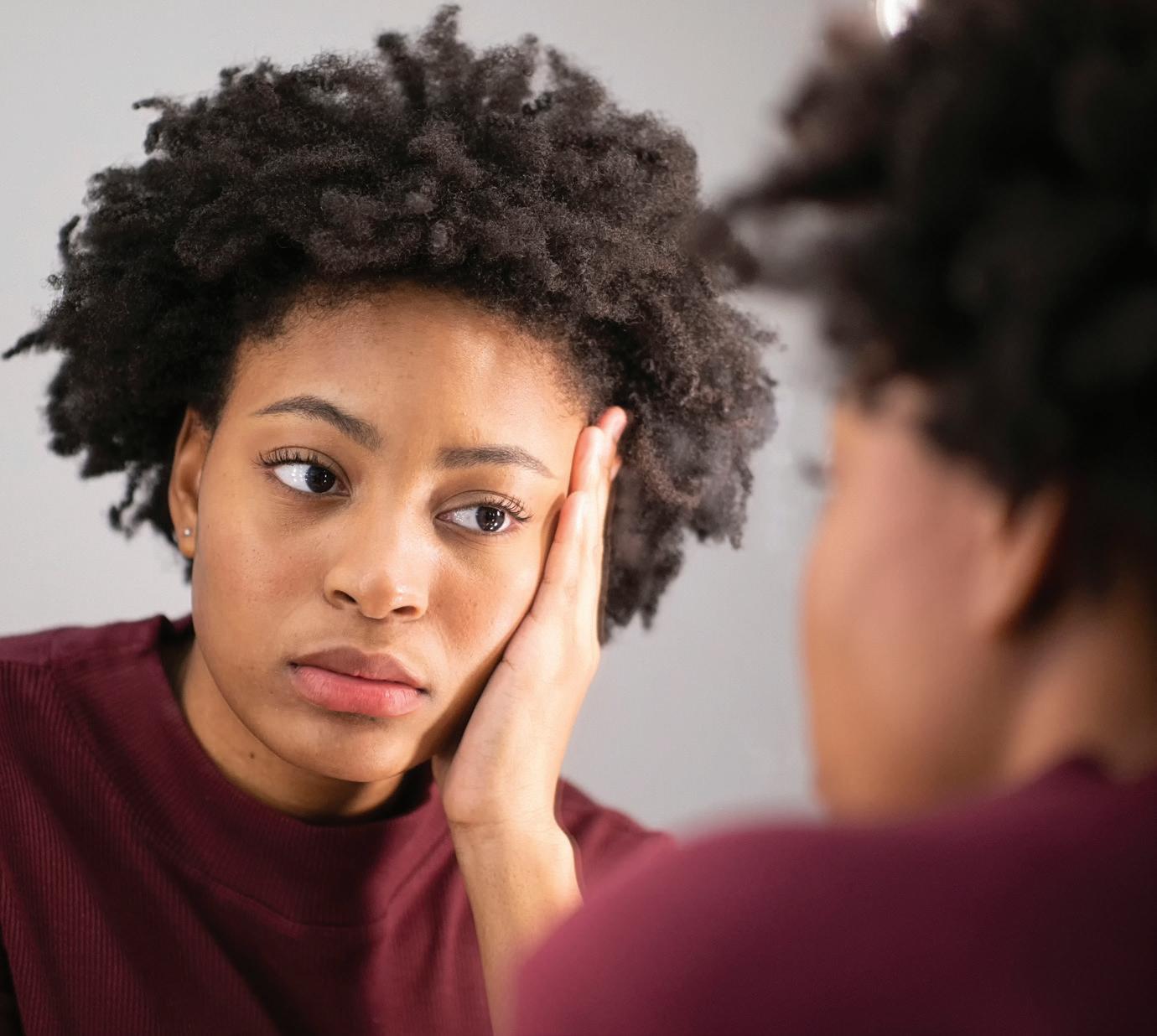
6 minute read
Defining Dermal Fillers
Get the lowdown from the experts on what dermal fillers are and how they can help you rejuvenate and beautify your face
You may not have even heard of dermal fillers a few
Advertisement
years ago. When reality-TV star Kylie Jenner opened up about getting lip fillers in 2015, it led to a surge of enquiries from the public wanting to learn more about how they might benefit from the treatment. The popularity of dermal fillers has since skyrocketed worldwide, with social media, celebrity influence and more accessibility to treatment for the general population driving this trend.
But what actually are dermal fillers, and should you consider getting them? We spoke to the experts, who have been injecting filler ever since it came to the market more than 25 years ago!
What are dermal fillers?
In simple terms, nurse prescriber Sharon Bennett explains that dermal fillers are gel implants, which can be injected into the skin by a medical professional using a needle. “They can be used in many different ways such as to lift and smooth lines and wrinkles, replace volume loss as a result of ageing, to shape the skin and enhance certain areas, to hydrate the face, or even to help scarring,” she explains. Dermal fillers fall into two groups – temporary and semi-permanent – and consultant plastic, reconstructive and aesthetic surgeon Mr Dalvi Humzah says that temporary fillers are most popular because they contain the ingredient hyaluronic acid (or HA) which can be removed more easily compared to semi-permanent fillers.
“Many people describe dermal fillers as ‘fake’ but, actually, most contain HA, which is a fluid that naturally occurs in the human body between our cells and can even be found in areas like our bone joints. The HA in dermal fillers is slightly different to the HA found in our bodies as it is synthetically made and modified in the laboratory so that it can last longer after it has been put in,” he says. Depending on how the HA is modified, it can last anywhere between 3-18 months once injected, Mr Humzah adds.
Mr Dalvi Humzah,
consultant plastic, reconstructive and aesthetic surgeon, London, Halesowen, Gloucester & Wolverhampton IG: @pdsurgery Sharon Bennett,
aesthetic nurse prescriber, Harrogate IG: @sharonbennettskin
How can dermal fillers benefit you?
No one necessarily needs dermal fillers, nurse Bennett emphasises, but women and men of all ages and ethnicities may benefit from them in some way. She says, “Dermal fillers are most commonly used to treat the signs of ageing and can improve skin quality and fight lines, which usually creep in by your late 20s or early 30s. They can also restore volume loss, which is something you might start to see in your 30s or 40s. Dermal fillers are good for preventative ageing or ‘prejuvenation’ and can be used to spark collagen synthesis, allowing skin to remain smooth.”
But, of course, it’s not just those showing signs of ageing who may benefit from the treatment, nurse Bennett says. “The intent for younger people

Nurse Sharon Bennett
is usually to enhance, refine, create balance, and improve light reflection rather than restore skin quality or fight lines. The most popular areas for younger patients include the lips and cheeks. Nose straightening is also very popular for those who might not want to undergo cosmetic surgery and placing filler in the chin can help those who have a recessed lower face,” she explains.
Mr Humzah emphasises that before you get fillers, you must have a full consultation with an appropriatelytrained practitioner. “The consultation should include questions about your medical history, your cosmetic concerns, and all the different types of treatments that might benefit you, as well as the risks,” he says, adding, “Then your practitioner will tell you if dermal fillers are the best treatment for you.” Mr Humzah notes that you should also have a ‘cooling-off’ period, which allows you time to really think about having the treatment before you go ahead. Of course, medical practitioners will also carefully consider the mental wellbeing of a person prior to a procedure to ensure they are suitable for treatment.
Will you look fake?
We have all seen hideous pictures of the ‘trout pout’ or ‘pillow face’, so it’s no wonder that people are afraid of fake results. Nurse Bennett and Mr Humzah say that fake and overexaggerated results are one of the biggest fears people have of getting dermal fillers. “The fact is, there are a lot of people who have had bad work done, which has led to this huge misconception that dermal fillers make people look fake,” nurse Bennett says. “But although this can and does happen, if you choose your practitioner well, you can get amazing results that will look perfectly natural. People won’t even know you have had anything done – they will think you look good and refreshed but won’t be able to tell why.” Turn to p.23, p.45 and p.50 to see some examples of subtle, natural dermal filler results!
What dermal filler is best for you?
There are more than 60 dermal fillers available in the UK and some brands you might have heard of include Aliaxin, Belotero, Juvéderm, Restylane, Saypha, Stylage, Teosyal, Yviore; the list goes on. But actually, nurse Bennett and Mr Humzah say that dermal fillers aren’t like choosing a skincare or foundation brand. “It’s really the practitioner who should make the choice as to what filler is best for you,” Mr Humzah explains. Nurse Bennett adds, “This is because every dermal filler will have slight variations and we practitioners will be highly trained in using selected products. We usually choose one or two brands that we have assessed carefully for safety and efficacy.” The practitioner will choose the best filler for your individual concerns, meaning that you might be injected with a different product to your friends. Mr Humzah says that it’s important to remember what dermal filler you have had, in case you have any delayed complications, and your practitioner should always give you a card with this information after your treatment.

Are there any risks to getting dermal fillers?
Dermal fillers can cause minor side effects such as bruising, pain and swelling immediately after treatment or lumps, bumps and infections days or months later. Mr Humzah says, “It’s important that your practitioner goes through the risks with you in your consultation, and that you let them know as soon as possible if you notice any abnormalities.” The most dangerous risk is a vascular occlusion, which is when the blood in your vessel becomes blocked by the dermal filler, potentially leading your cells to die. In extremely rare circumstances, it can even result in blindness. However, nurse Bennett and Mr Humzah reassure that properly-trained medical practitioners will be able to help you weigh up and understand the pros and cons of getting treatment, inject in the safest possible way and, in the event that something does happen, they will be best equipped to manage the situation.
Mr Dalvi Humzah
How much should your fillers cost?
This depends greatly on the clinic’s location, the filler brand, amount of product used, and the training, experience and qualifications of the practitioner. In nurse Bennett’s practice, prices start at £200 and in Mr Humzah’s practice, fillers cost upwards of £300. Mr Humzah and nurse Bennett say that it’s important to choose a medical practitioner who is insured and regulated, such as through the General Medical Council, Nursing and Midwifery Council and General Dental Council, and someone who can demonstrate to you that they are thoroughly trained and experienced in injecting dermal fillers. They explain that if the price seems too good to be true, it’s probably an indicator that the practitioner is cutting corners and is unlikely to be the best person to deliver great results and a safe treatment.










